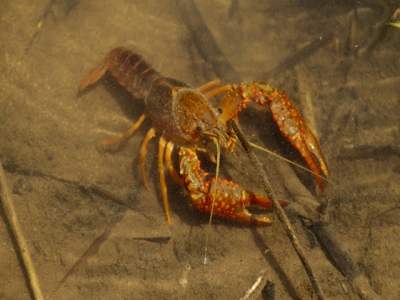Are crayfish farmers overfeeding?

A new study suggests that Chinese crayfish producers would improve the performance of their farms and their finances if they relied more on natural food items and less on the provision of supplementary feed.
China produces 850,300 tonnes of Procambarus clarkii a year
The researchers involved in the study sought to find out more about optimal diets for red swamp crayfish, Procambarus clarkii, in China. Although they’re native to the southern part of North America, P. clarkii have been introduced to aquaculture worldwide and, according to the China Fishery Statistical Yearbook, in 2016 China produced 852,300 tonnes – representing 42 percent of the country’s freshwater shrimp aquaculture production.
However, despite being one of the country’s key cultured species, the researchers noted that little information is available on the optimal feeding levels of this species, especially in ponds cultured with macrophytes – as most of the research to date has been lab-based and therefore hasn’t taken into account the role of naturally available foods. As a result they tested the effects of five different feeding levels (20, 40, 60, 80 and 100 per cent satiation) of an artificial diet on growth performance and muscle composition of juvenile P. clarkii in 15 concrete ponds cultured with the macrophyte Hydrilla verticillate.
The results showed that growth performance decreased only when feeding levels were below 60 per cent satiation. Muscle composition analysis revealed that the moisture and ash contents of muscle did not vary significantly with feeding levels but that the lipid and protein contents of muscle significantly decreased when P. clarkii was fed to 40 per cent satiation. Meanwhile stable isotope analysis suggested a shift in crayfish diets to easily available H. verticillata when supplementary feed levels decreased.
Not only could this improve crayfish performance, but it would also lessen the environmental impact of crayfish farming – by reducing the amount of organic matter in the system, but also improve economic performance: artificial diets account for account for more than 50 per cent of total aquaculture costs, so reducing artificial provision by 40 per cent would save 20 per cent of overall production costs.
“With this study,” they conclude, “we hope to encourage crayfish farmers to reduce feeding levels and increase natural food items such as macrophytes in culture ponds to maximize crayfish production while reducing production and environmental costs. With this study, we also hope to encourage further scientific works aiming at refining feeding strategies of aquatic species and limiting feeding amounts, while considering the contributions of natural food items in aquaculture.”
Related news
Tools

Phối trộn thức ăn chăn nuôi

Pha dung dịch thủy canh

Định mức cho tôm ăn

Phối trộn phân bón NPK

Xác định tỷ lệ tôm sống

Chuyển đổi đơn vị phân bón

Xác định công suất sục khí

Chuyển đổi đơn vị tôm

Tính diện tích nhà kính

Tính thể tích ao




 Effect of multiple feedings and a low-fishmeal, amino…
Effect of multiple feedings and a low-fishmeal, amino…  Patent issued for indoor recirculating aquaculture system
Patent issued for indoor recirculating aquaculture system